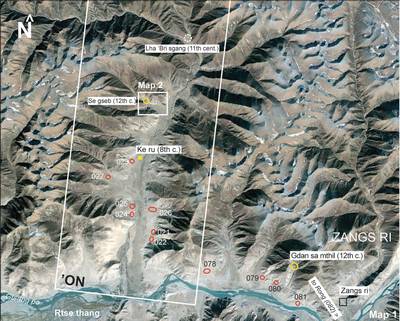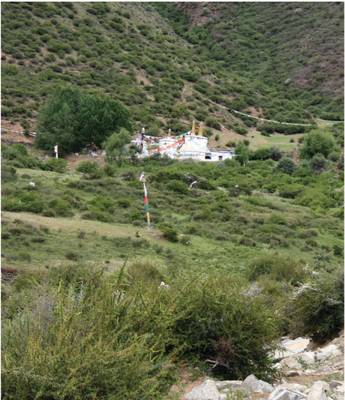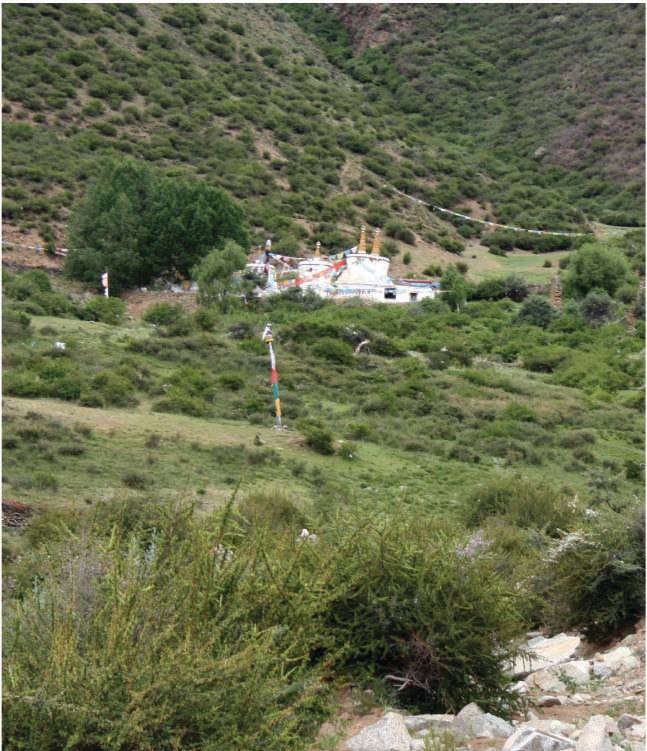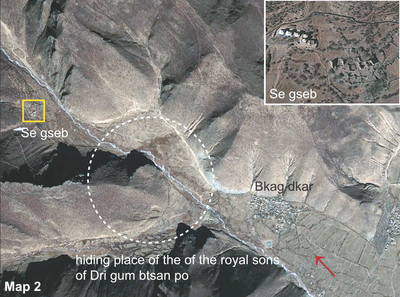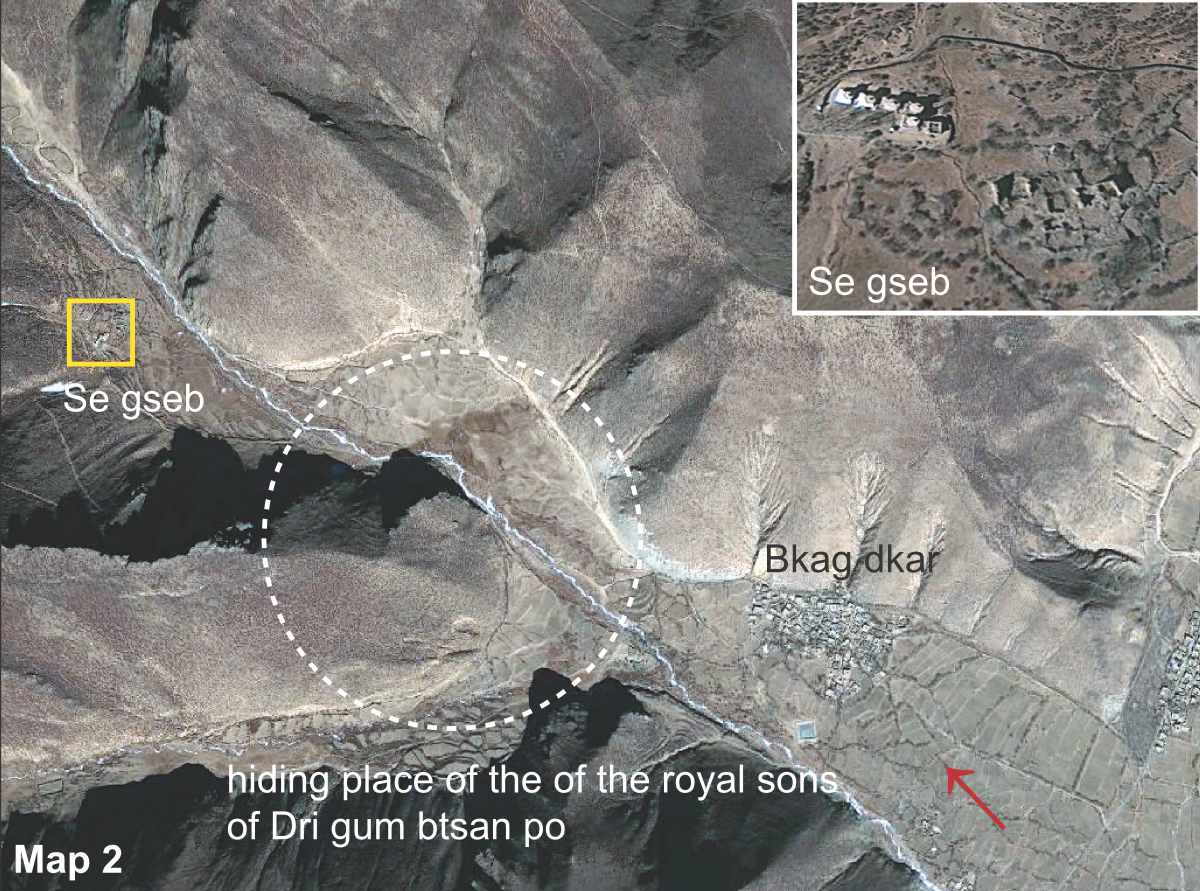What happened in 'On?
Tradition has it that Bon or more precisely the bon po and gshen priests (incl. the specialists of the ancient burial mound practise) came from a foreign (Inner or Central Asian) tradition. According to Buddhist chronicles, the starting point of the first spread of “Bon” in Tibet described as rdol bon (or “outbreak Bon”) was in ’On. This is stated in the rdol bon story of the “boy with ass’s ears“ (most detailed in the Mkhas dpa’i dga’ ston), who was born into the priestly gshen lineage of ’On, and who after his initiation tour was provided with headgear, which evidently represents the “Phrygian cap“ (see Stein 1972; Ramble 2007; Vitali 1996; Martin 1999, 2001; the latter, however, sees here rather an example of a Chos story with an anti-Bon polemic). We think, the boy’s home in ’On refers to the place of a local gshen family - geographically to the small side valley behind the village Bkag dkar, where Zhang Gsum thog pa, a religious brother of the ’Bri gung founder ’Jig rten mgon po established the Se gseb stupa sanctuary in the 12th century (Map 2, Fig. 1). The site we think corresponds to the Gog chen mkhar of ’On, where according to an account in Mkhas pa’i Lde’u’s chronicle the sons of the fallen king Dri gum btsan po took refuge from their persecutors. The story ends that the three sons when setting off from ’On each then founded new dominions, namely in Nyang po, Kong po and Spo bo (see map of Eastern Lhoka). This episode seems to tell us that here, in the milieu of a local priestly tradition the sons received something like the insignia of a potential ruler. Possibly, the account comes from the same collective memory as the ass’s ears story, which was transmitted within the gshen family based in ’On. This was one of many, in whose milieu the Bon religion developed from the 11th century, but also a number of contemporary Buddhist masters are known to have come from a gshen or bon po family environment, including (Bka‘ brgyud pa) masters from ’On or Ngam shod. See for details, Hazod (forthcoming), "The priest with the Phrygian cap."
